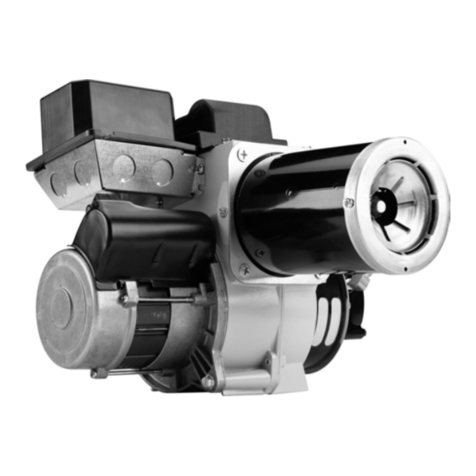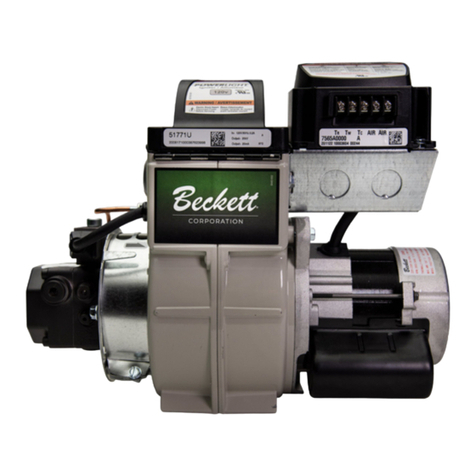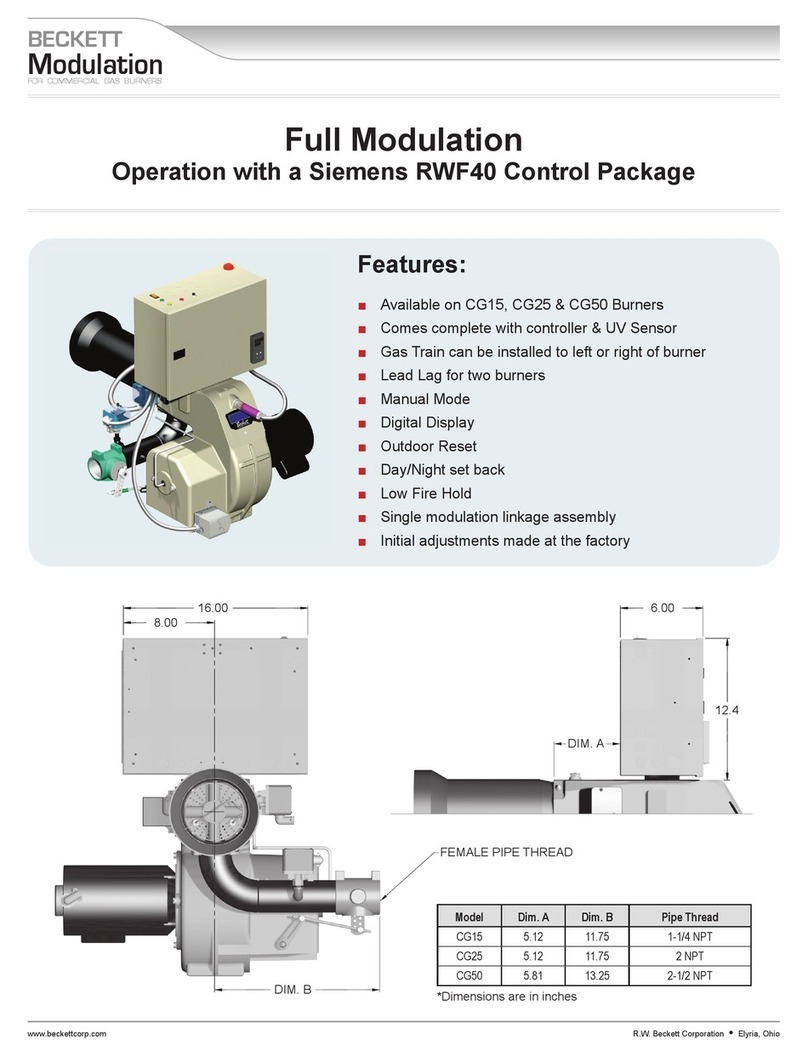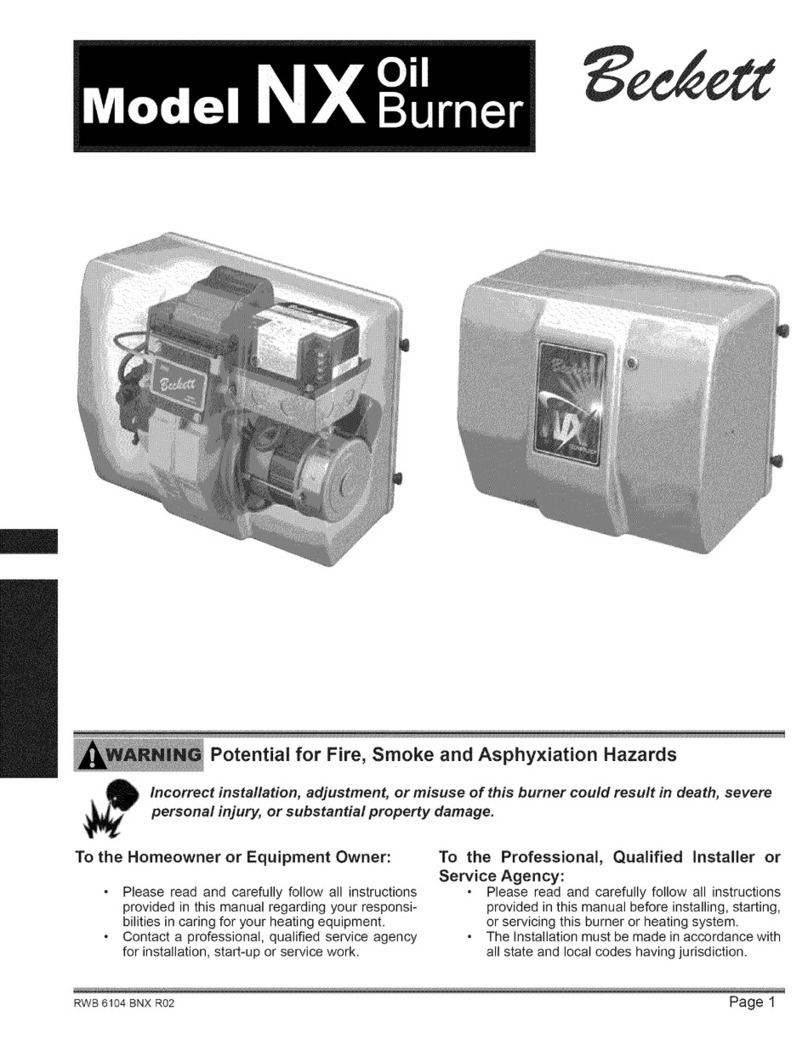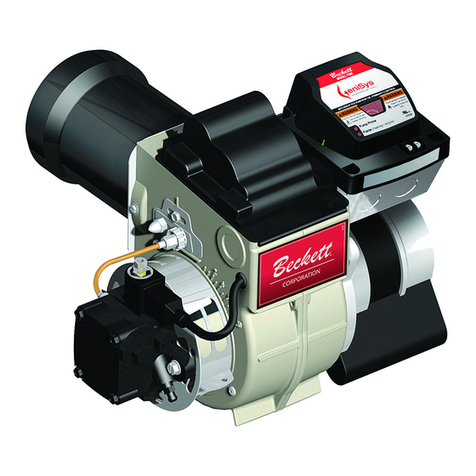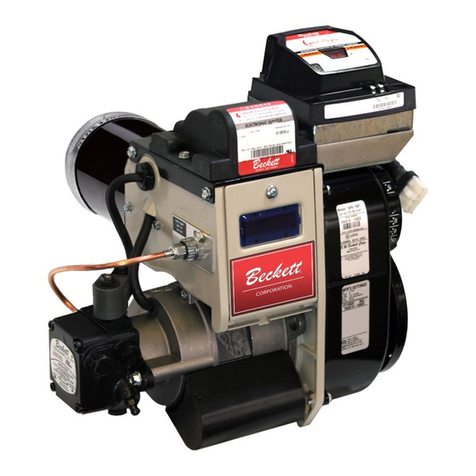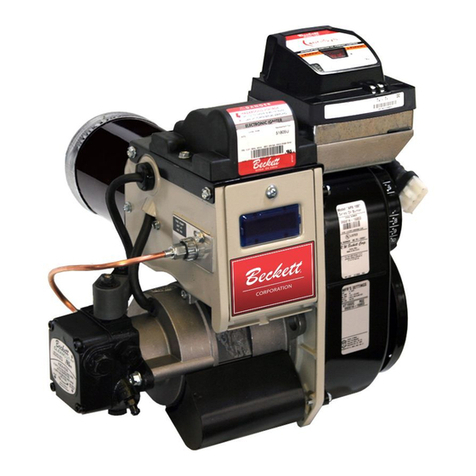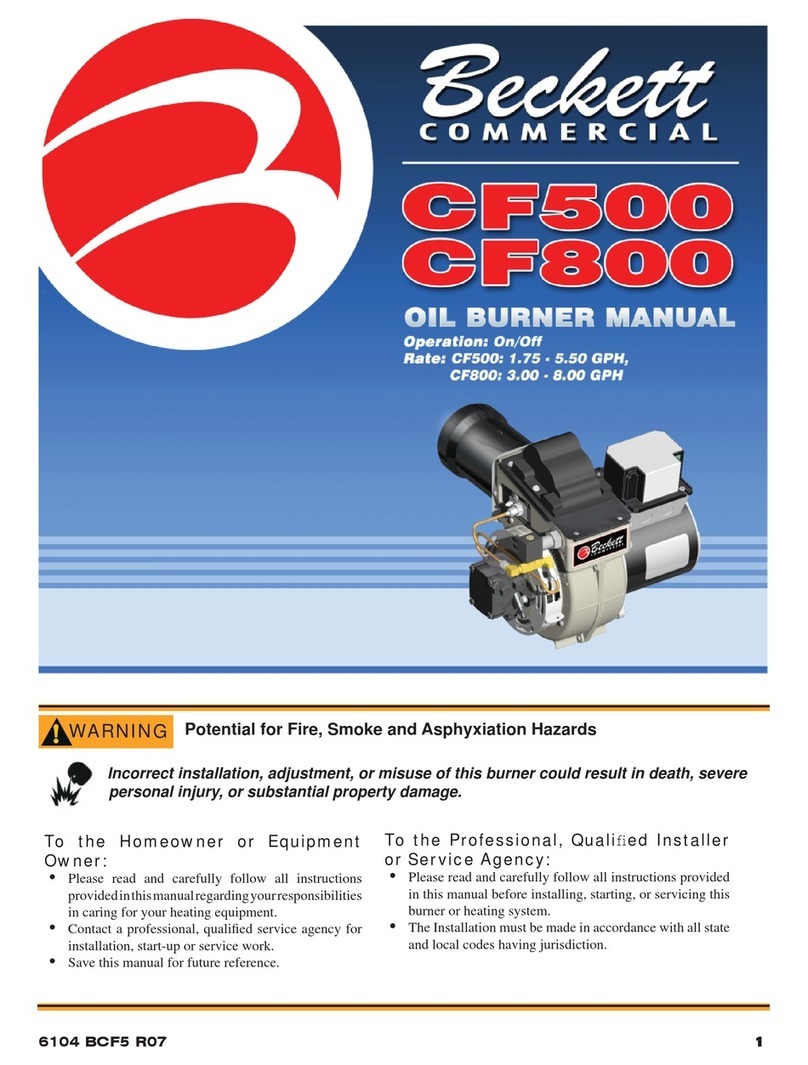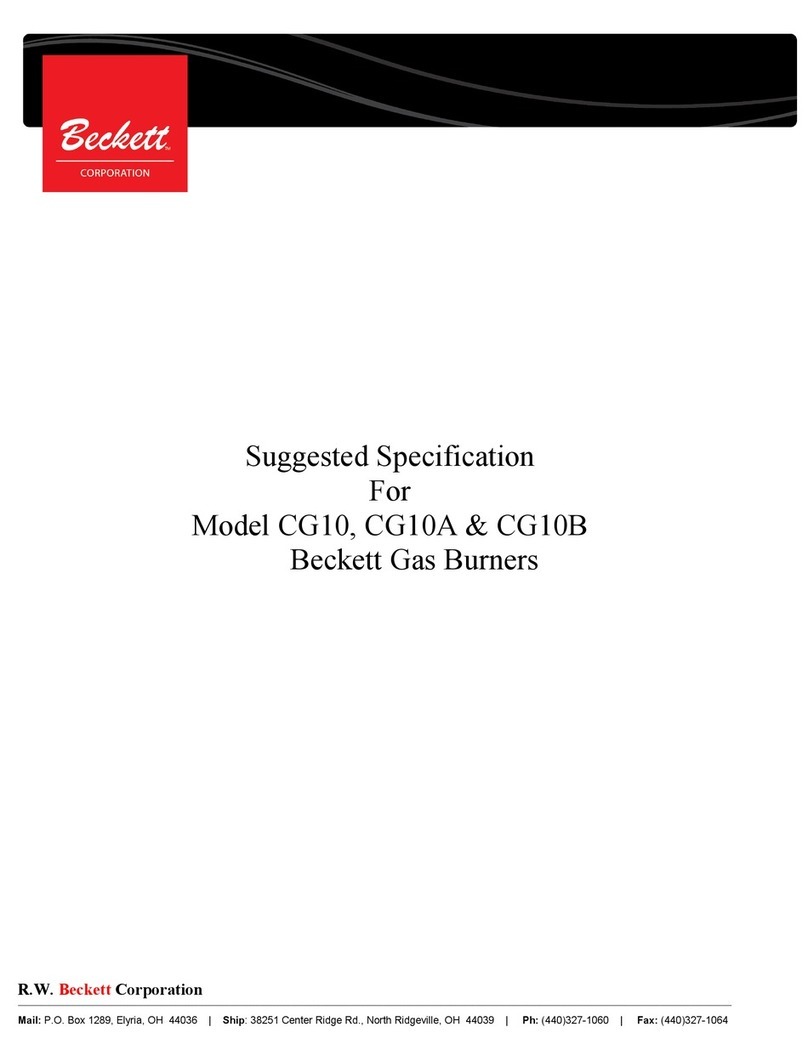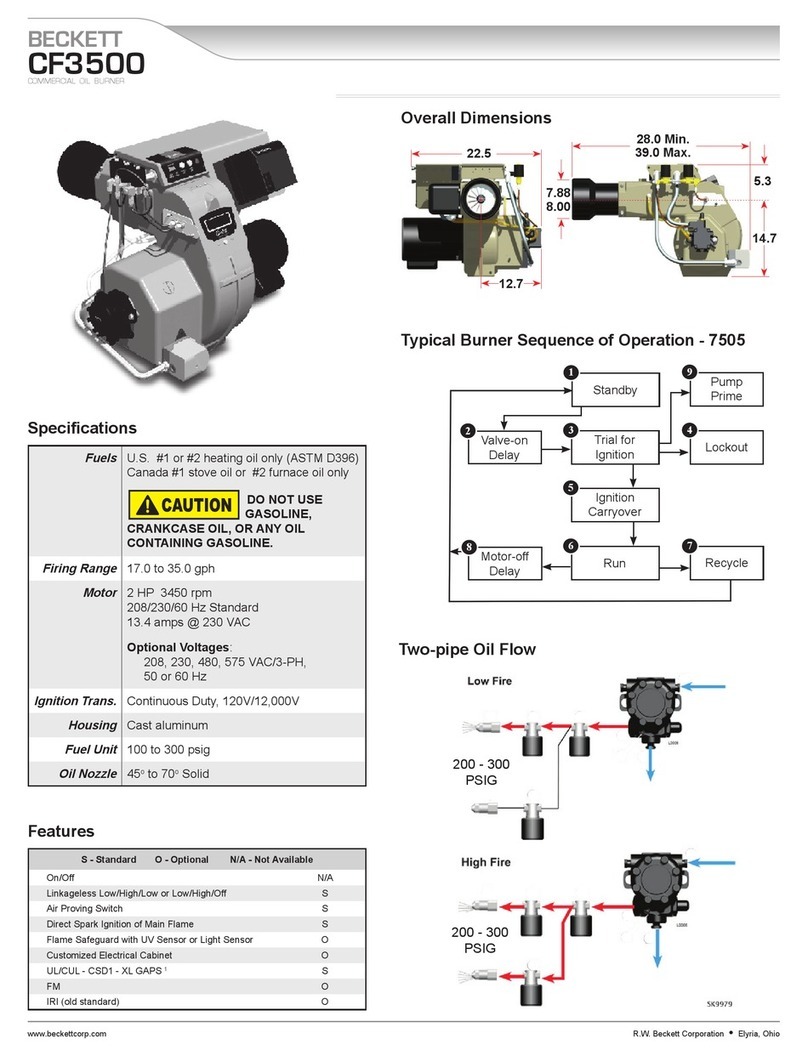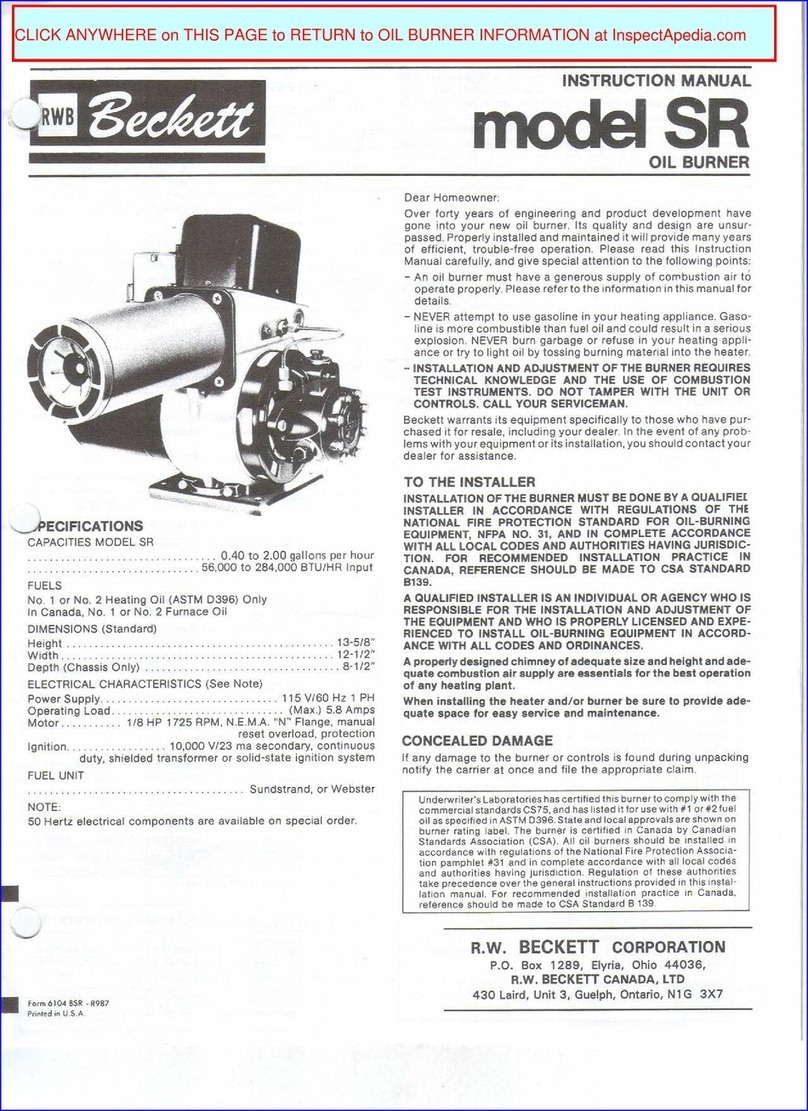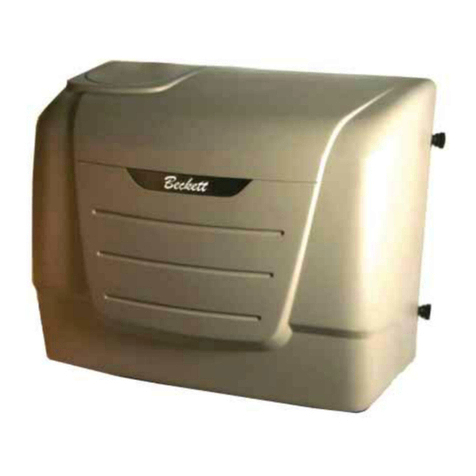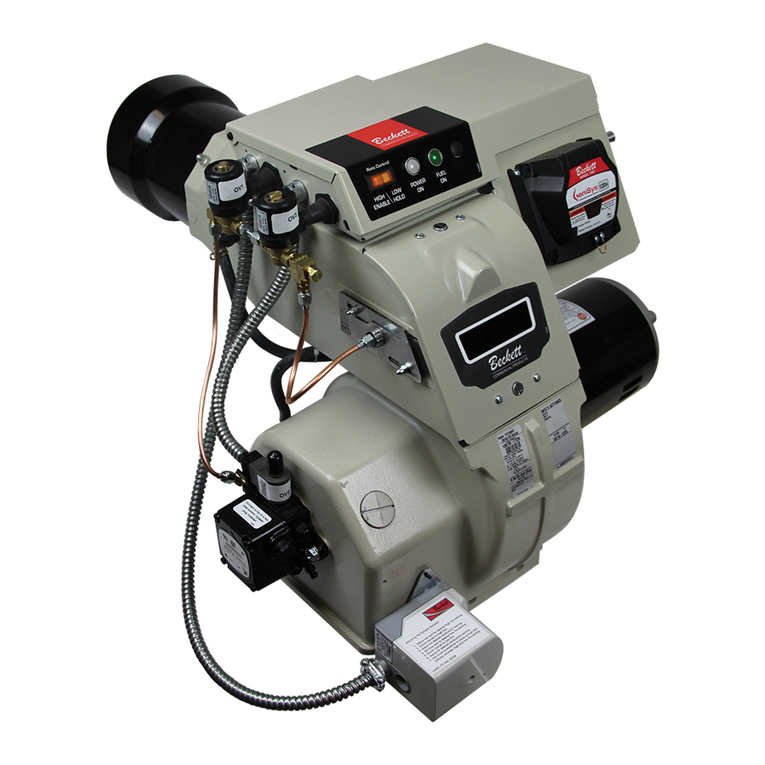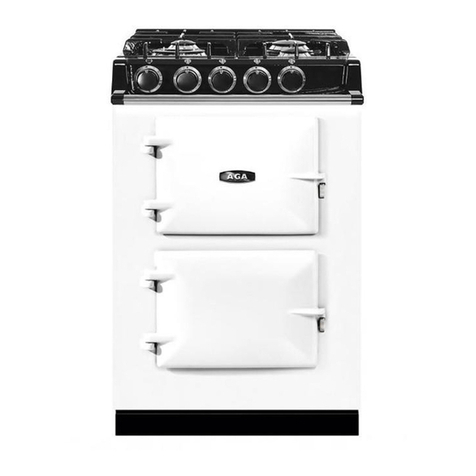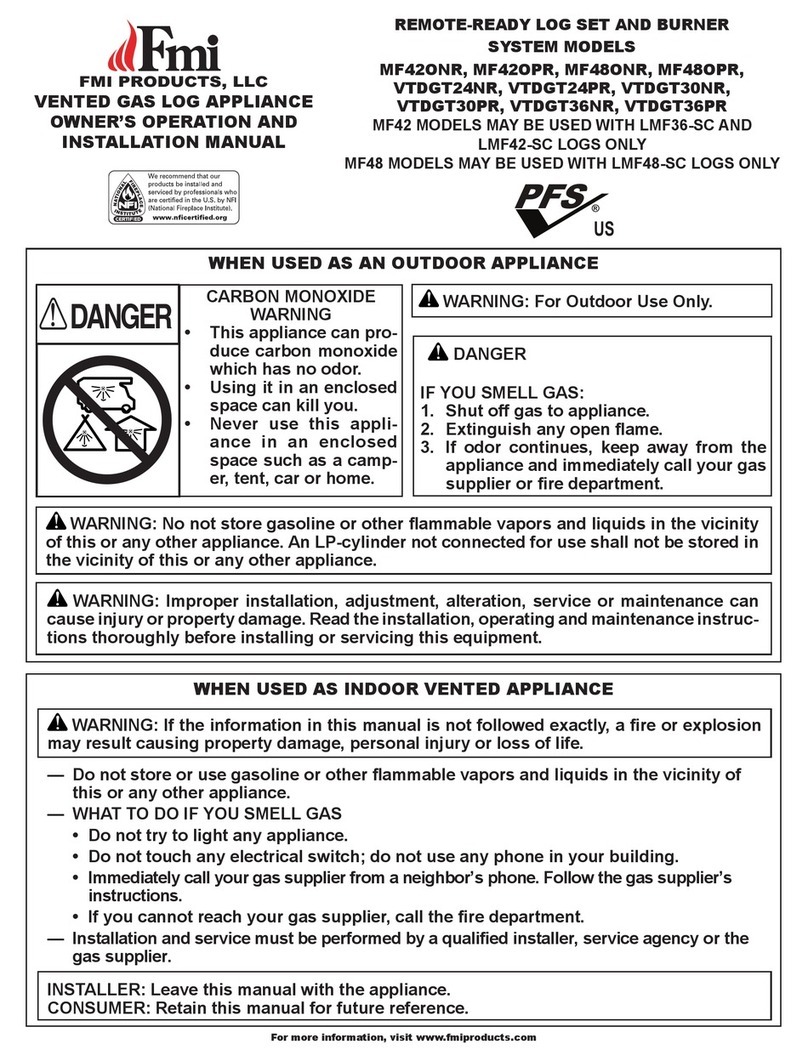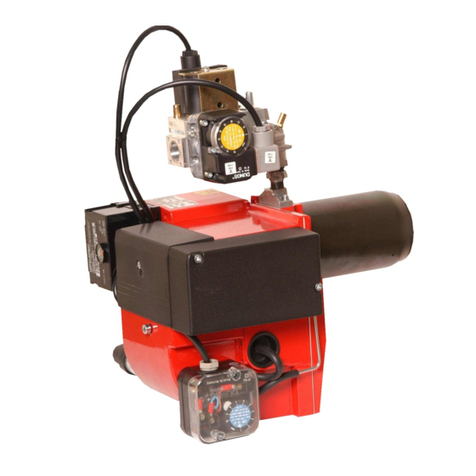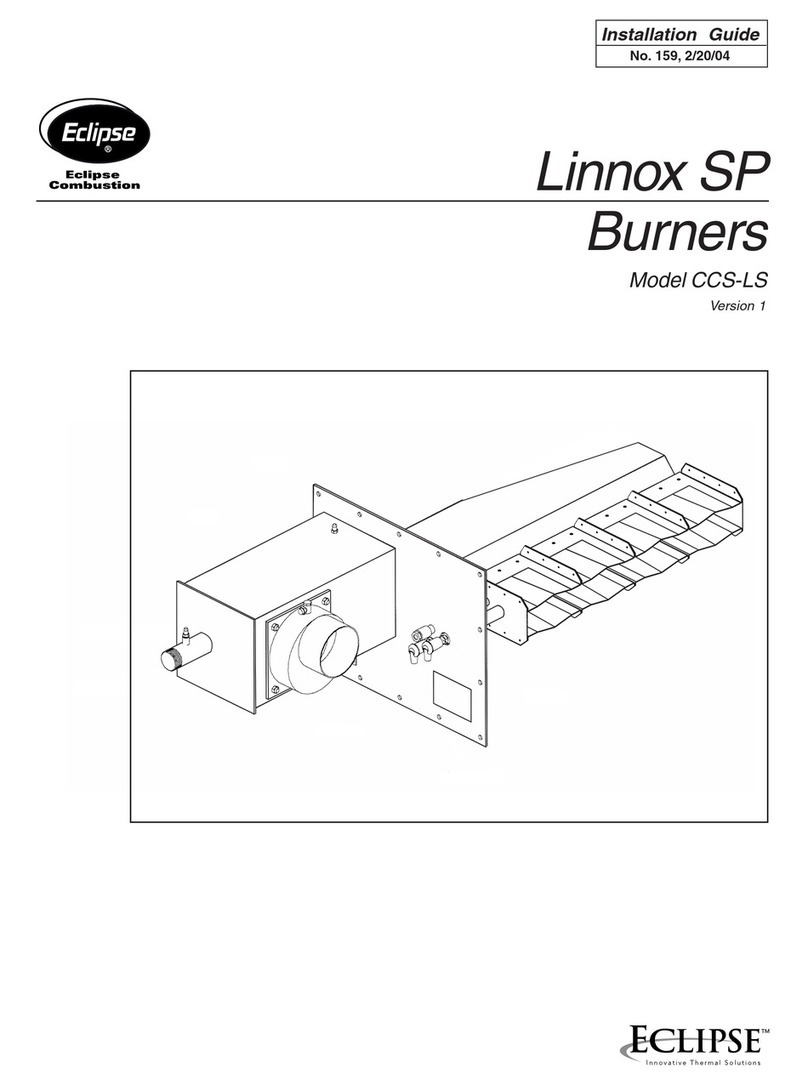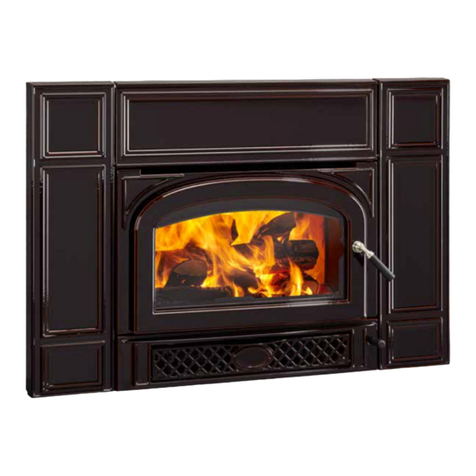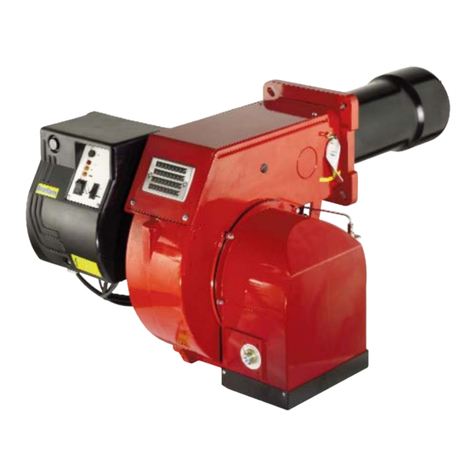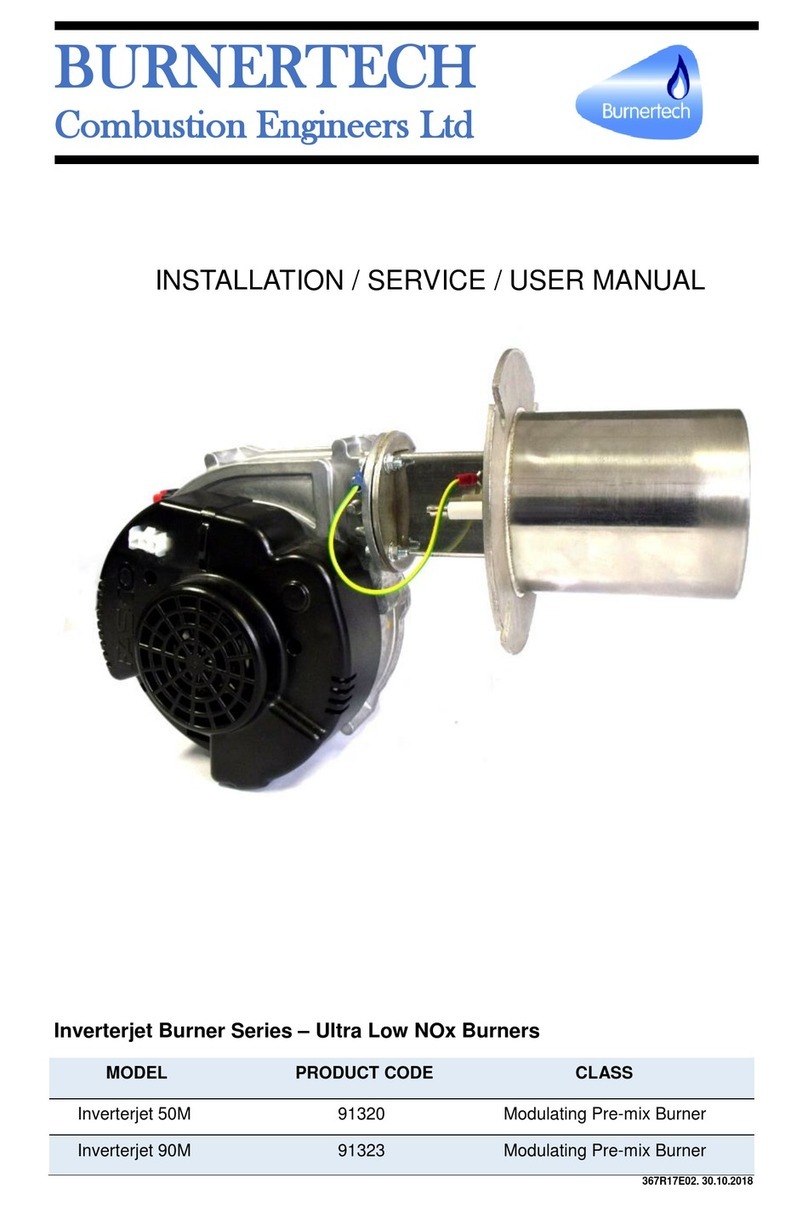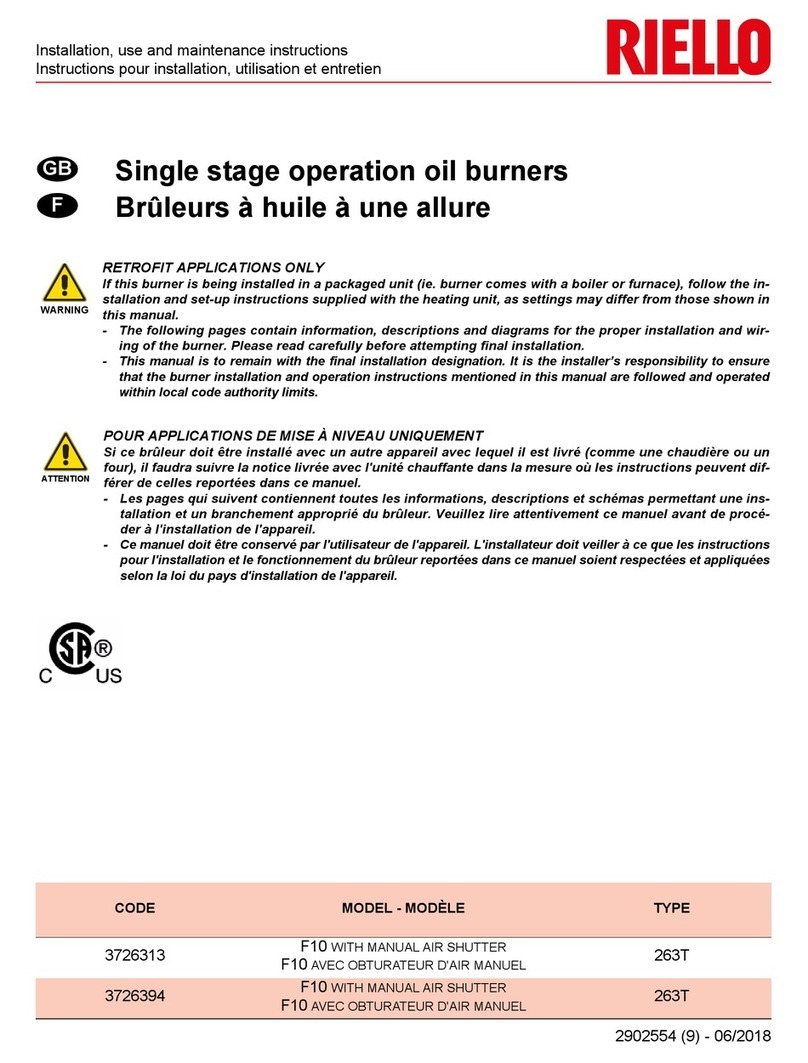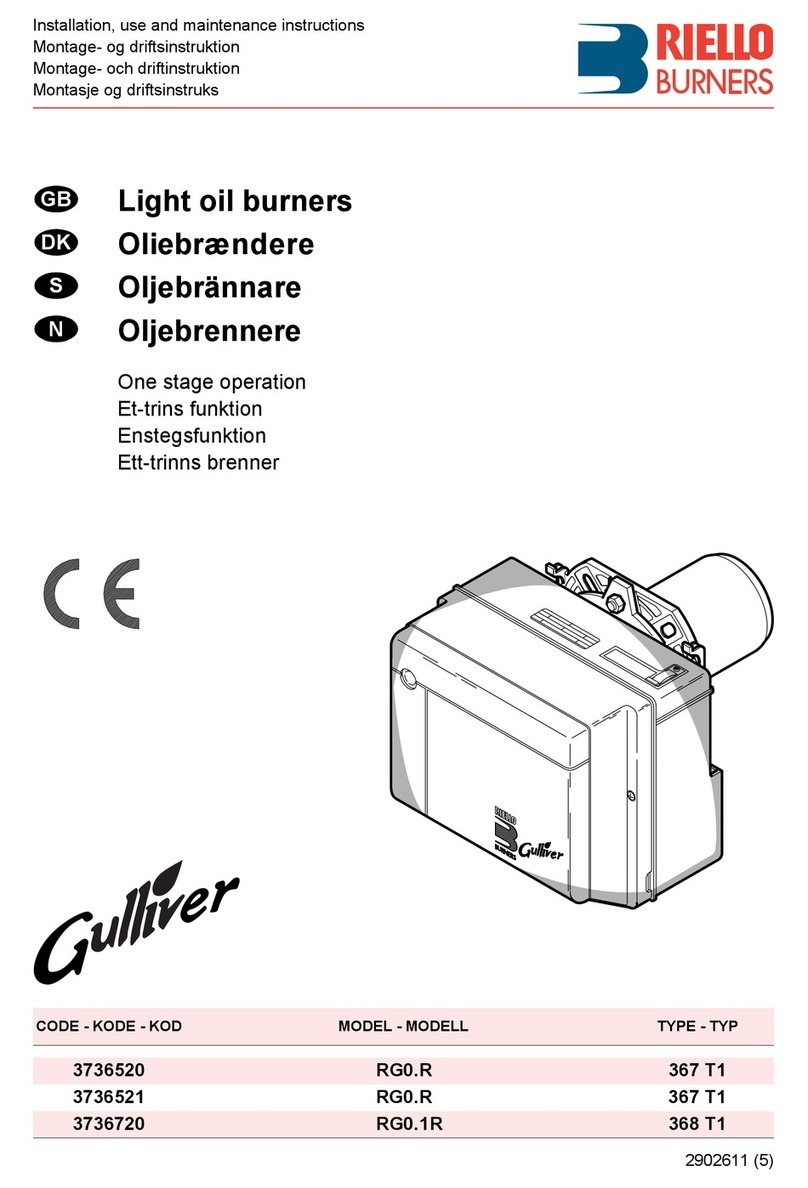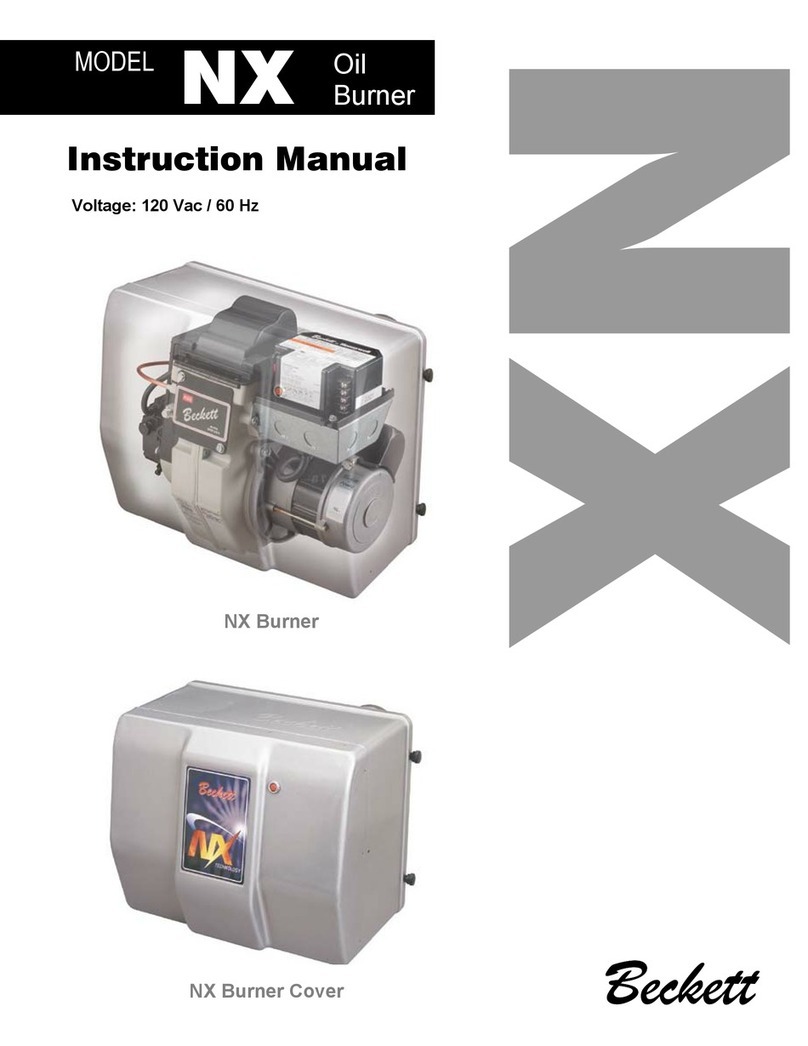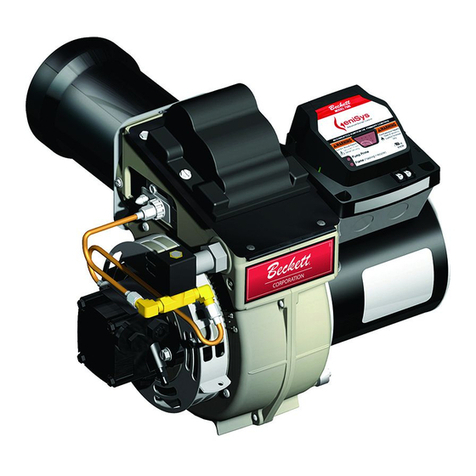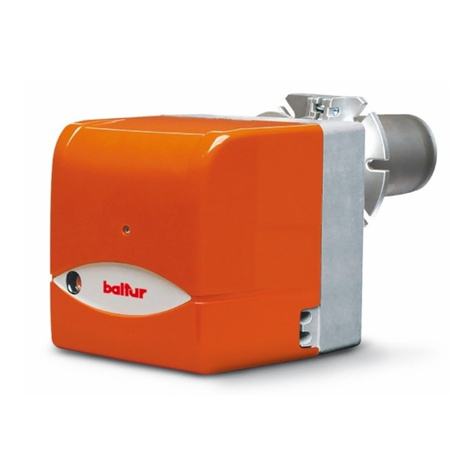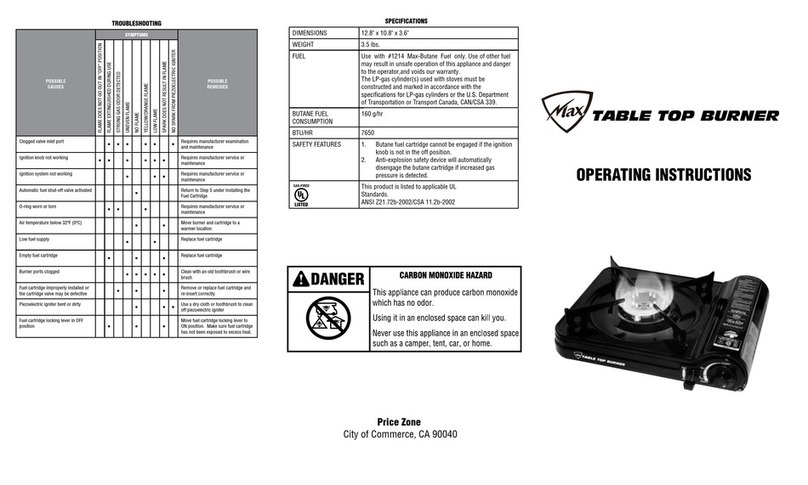
16
Start Up Burner/Set
Combustion
Explosion and Fire Hazard
Failure to follow these instructions could
lead to equipment malfunction and result
in heavy smoke emission, soot-up, hot
gas puff-back, fire and asphyxiation
hazards.
Do not attempt to start the burner when excess oil
has accumulated in the appliance, the appliance is
full of vapor, or when the combustion chamber is
very hot.
Do not attempt to re-establish flame with the burner
running if the flame becomes extinguished during
start-up, venting, or adjustment.
Vapor-Filled Appliance: Allow the unit to cool off
and all vapors to dissipate before attempting another
start.
Oil-Flooded Appliance: Shut off the electrical
power and the oil supply to the burner and then clear
all accumulated oil before continuing.
If the condition still appears unsafe, contact the Fire
Department. Carefully follow their directions.
Keep a fire extinguisher nearby and ready for use.
y
y
y
y
y
y
partially open air shutter. This is an initial air setting
for the pump bleeding procedure only. Additional
adjustments must be made with instruments to prevent
smoke and carbon monoxide generation.
Set the thermostat substantially above room
temperature.
Close the line voltage switch to start the burner. If the
burner does not start immediately you may have to
reset the safety switch of the burner primary control.
Bleed air from fuel unit as soon as burner motor starts
rotating.
To bleed the fuel unit, attach a clear plastic hose
over the vent fitting. Loosen the fitting and catch the
oil in an empty container. Tighten the fitting when all
air has been purged from the oil supply system.
If the burner locks out on safety during bleeding,
reset the safety switch and complete the bleeding
procedure. Note — Electronic safety switches can
be reset immediately; others may require a three- to
five-minute wait.
If burner stops after flame is established, additional
bleeding is probably required. Repeat the bleeding
procedure until the pump is primed and a flame is
established when the vent fitting is closed.
For R7184 primary controls, see Technician’s Quick
Reference Guide, part number 61351 for special
pump priming sequence.
For 7505 primary controls, see Technician’s Quick
Reference Guide, part number 61666 for special
pump priming sequence.
Prepare for combustion tests by drilling a ¼”
sampling hole in the flue pipe between the appliance
and the barometric draft regulator.
Initial air adjustment — Test the flue gas for smoke.
Adjust the air shutter (and air band, if necessary) to
obtain a clean flame. Now the additional combustion
tests with instruments can be made.
Cad Cell Resistance Measurement
If the Beckett 7505 control is equipped with the
GeniSys Display Module, part 52067U, the cad cell
resistance can be selected and read on the LCD
screen. Also, the GeniSys Contractor Tool, part
52082U, can be used for this purpose.
If these are not available, the cad cell leads can
be unplugged from the control and the resistance
measured with a meter in the conventional way.
Conduct these tests with flame present.
Flame Detection Range
Normal = 0 to 1600 ohms
Limited = 1600 ohms to lockout
Resetting From Restricted or Hard Lockout
If the control continues to lockout without a satisfied
call for heat, or fails the motor relay check, the control
3.
4.
5.
○
○
○
○
○
○
6.
○
○
○
Section: Start-up Burner/Set Combustion
Wire Burner
Some Thermostats Are Polarity
Sensitive. Reversed polarity
could cause erratic cycling of the burner control.
Connect the wire from the RHor R terminal on the
thermostat to the TR terminal on the control. Connect
the wire from the W terminal on the thermostat to the TW
terminal on the control.
Make connections to the control’s terminals as
shown in Figures 9a and 9b. Refer to the label on
the underside of the control for wiring details.
Note: Motor-off delay on a 7505P will be disabled if
the safety and operating limits as shown in Figures
9a and 9b interrupt power to the control terminal L1.
Connect thermostat leads to the TR and TW
terminals on the control or jumper the TR and TW
terminals on the control, as directed by the appliance
wiring diagram.
- Thermostat anticipator Current: 0.1 amp
- Thermostat voltage: 24 volts AC
Note that if the thermostat short cycles or operates
improperly, it may require an isolation relay for proper
operation. The Beckett A/C Ready Kit (part no. 51950U)
provides this function. Wiring instructions are included with
the A/C Ready Kit.
○
○
○
Open the shutoff valves in the oil supply line to the
burner.
If the air control is not preset, close air band and
1.
2.




















